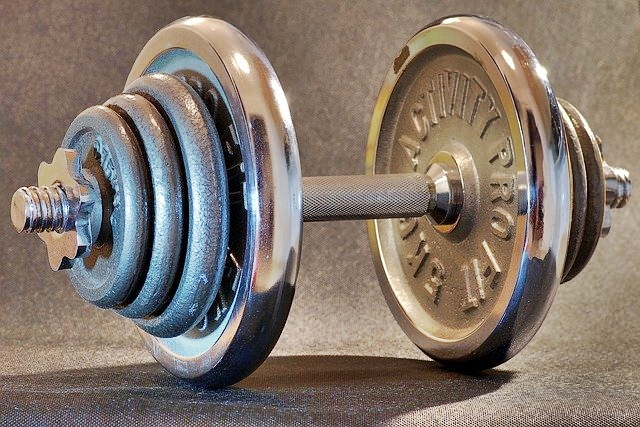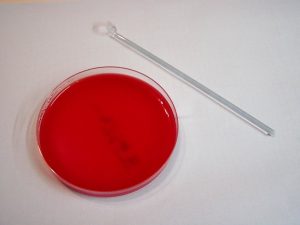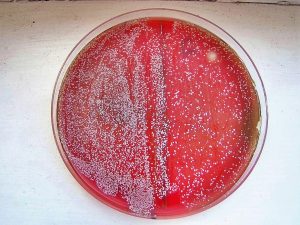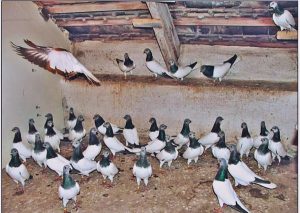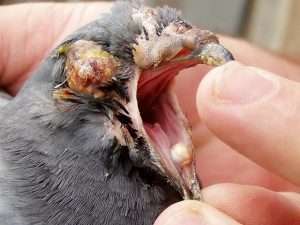Question
Can garlic and probiotics be used together? I think garlic is a natural antibiotic and kills the useful probiotic bacteria.
*
Answer
A very interesting question, even if it may seem a bit too meticulous at first glance. However, we know that beneficial intestinal flora is one of the most important, or perhaps the most important, for the health of pigeons. The question is even more interesting when we look at it in terms of racing performance.
To find the answer to this question, we did a little experiment. The results of the experiment and the conclusions drawn from them revealed some very surprising things. The results were especially important in terms of flying performance.
Garlic and its extracts have long been widely used in pigeon breeding. The active ingredients in garlic, like antibiotics, act on bacteria. They kill many of them or inhibit their reproduction. This is obviously a good thing for pathogenic bacteria, but what about beneficial intestinal bacteria? Does garlic have an effect on them too? And if so, how? Is it advantageous or disadvantageous from our point of view?
I conducted a simple laboratory experiment for this topic. I took a culture medium used to make bacteria grow, a slice of garlic, one drop of pure water and a little amount of a certain probiotic containing several strains of beneficial intestinal bacteria.
In first photo we can see a Petri dish that is a special bacterial culture plate. (Its diameter is about 10 cm.) In the dish, there is chicken blood agar – a gelatine-like substance mixed with chicken blood. Most of the bacteria can multiply quickly on blood agar, which is maintained at a stable temperature of 37 degrees Celsius in an incubator.
A glass rod is in the photo next to the dish. We use these glass rods to spread some drop of the sample over the surface of agar.
I took some of the probiotic, dissolved it in a drop of sterile water, and spread this drop over the entire surface of the blood tube. Then I took the slice of garlic, squeezed a drop juice from it and spread this drop of garlic over half of the surface of blood agar. Only over the right side. I then placed the Petri dish into an incubator for a day – to allow the bacteria to multiply.
In the second photo you can see the result of this bacterial culturing. The countless little white dots are the colonies of bacteria – each colony the size a pinhead contains about one billion bacteria and every colony really did emerge from one bacterium (in the space of a single day!). These are all beneficial bacteria, of course, since they descend from the probiotic.
There is no question that there are far fewer bacterial colonies on the right side of the blood agar than on the left. This suggests that the alkaloids in garlic kill or inhibit the growth of many beneficial bacteria.
This probiotic contains several strains of beneficial bowel bacteria: Lactobacillus acidophilus, L. casei, L. lactis, L. bifidus and Enterococcus faecium. I think that, of these, one or two strains are resistant to alkaloids of garlic. The garlic cannot destroy them, so they are able to survive and even multiply.
This little experiment has demonstrated that:
– The alkaloids of garlic do indeed kill a large amount of probiotic bacteria.
– If we use a probiotic that contains several different strains of bowel bacteria, the odds are that some strains among them are resistant to garlic, so they survive the alkaloids of the garlic and are able to multiply in the bowel.
So it is not a good idea to give garlic and probiotics together, as most of the probiotic is wasted and cannot do its job. So we should proceed as we do with antibiotics. Give the garlic first and then give the probiotic from the next day.
*
You might say that this is all very interesting, but it’s not very significant. If you say that, you may be wrong.
If you give garlic to pigeons once a week, the alkaloids in garlic will kill many beneficial intestinal bacteria, so there will be less beneficial bacteria in the gut. Right. So what?
Indeed, it does not seem to pose so great a threat, but let us do a bit of calculation! Suppose that the efficiency and the speed of digestion will decrease some per cent because of the destruction of useful bowel bacteria. If the digestion become slower, the amount of remaining excreta in the gut will grow a little, about half a gram (about 1/60th of an ounce). The racing pigeon’s weight will be more by half a gram.
And? What is half a gram?
Half a gram… We can get a better idea of what half a gram of extra load means to a racing pigeon if we compare this extra load to a human. Imagine an athletics race of 10,000 metres. A runner weighs about 72 kilograms and runs ten kilometres. A pigeon weighs 400 grams and flies 900 kilometres – with half a gram extra weight in its body. How much extra weight would the runner have to carry to avoid putting the pigeon at a “disadvantage”? In other words, what extra weight would be a proportionate burden on the runner?
72 kilograms / 400 grams = 180. The weight of the runner is 180 times the weight of the pigeon. So if the pigeon carries half a gram extra weight, the runner should carry proportionally 180 x 0.5 = 90 grams extra weight. 90 grams, or three ounces extra weight – not too much at all, for a human…
Well, a long racing pigeon flies much further than the man runs: about 90 times further. 90 grams carried 90 times further = this is proportionally 8.1 kilograms (17.82 lb)! What chances does a long-distance runner have with an 8-kilogram dumb-bell in his hand?
(Moreover, the pigeon does not run, it flies. And it’s much harder to carry the same weight in the air than on the ground.)
It is not only imperfect digestion that can cause extra weight in a pigeon. For example, vitamins giving at the wrong time increase the weight of the pigeon – even by several grams, not just half a gram! Antibacterial agents, as well, can disturb the water balance of the pigeon’s body – and it can become overweight.
So we have seen that every gram counts, especially in long-distance races. In the long run, grams become kilograms, and milliseconds become minutes – the minutes needed to succeed… The champion will be the one who handles his or her racers most precisely. Routine use of medicines and vitamins is anything but accurate.

